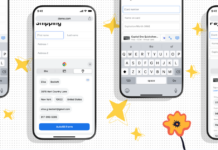In today’s digital age, the Portable Document Format (PDF) has become a ubiquitous file format used for sharing and preserving documents. PDF, a portable document format, allows users to share information between devices and operating systems without changing the original format of data stored within. This secure file format is highly used by individuals and businesses worldwide. Whether you’re submitting a job application, sending an important report, or distributing an e-book, chances are you’ll encounter PDFs.
In this article, we will discuss what PDF files are and why they are important, along with the benefits of using them for data sharing.
What is a PDF File?
PDF, short for Portable Document Format, is a file format created by Adobe Systems in the early 1990s. It was designed to solve the problem of sharing electronic documents while preserving their original formatting across different platforms, devices, and operating systems. PDF files are not platform-specific or software-specific, and hence you can open and view them on any device running on any operating system.
Other than texts and images, PDF files can contain hyperlinks, videos, embedded fonts, 3D illustrations, interactive buttons, and more. When you share a PDF over the internet, none of the data or visual elements are compromised.

While individual users can use this file format for creating CVs, college projects, or reports, businesses often develop their product manuals, brochures, flyers, eBooks, and other marketing collateral as PDFs.
If you think your PDF is large enough to share over the web, learn how to reduce the size of a PDF to make them shareable.
Why Do You Use PDF Files?
Let’s understand this using an example. Suppose you create your job application in Microsoft Word and share it as a .docx file. Since .docx is the default file extension for MS Word documents, everyone in the loop should have the software installed on the device to view the file.
Otherwise, they would not be able to open and view the file and the information stored within. And if they can, the chances are that some of the data or formatting could be changed or modified accidentally.
Now if you share this information as PDF, the file format guarantees to maintain the security and integrity of the text. Basically, the PDFs are developed for viewing and not editing, so the integral components of the document are maintained, making them more shareable.
The files look the same on all screen sizes, including phones, tablets, and computers. Sharing your job application as PDF helps to ensure that everyone can view it alike, as intended.
Benefits of Using PDFs
Most people rely on electronic documents such as PDFs for sharing data due to easy access across devices. Let’s have a look at the advantages that PDF files bring along.
#1. Security
Businesses and individuals prefer using PDFs as it’s easy to encrypt these files using passwords. PDF documents mostly store important information like bank statements, financial summaries, academic transcripts, or business-specific data.
It’s important to safeguard this data by adding strong, hard-to-decode passwords. By encrypting these files and the data stored within, you can eliminate the probability of unauthorized access to sensitive information.
#2. Accessibility
PDFs are highly accessible documents as they are readable on any device and operating system. Having said that, it means that you can easily view PDF data by opening them on phones, tablets, and computers.
Moreover, these files don’t demand to install any software on the device similar to other file formats like Word or PPT files. For example, to view .doc files, you must have Microsoft Word installed on the device and must have MS PowerPoint to view the presentations.
#3. Customizable
The portable document format is not limited to text; you can add as many supported visual elements as you want. These files are highly customizable and hence ideal when you are looking to prepare a presentation, product brochure, or anything captivating.
You can add multi-dimensional images, animation, graphics, videos, and other compelling elements to make the files more informative and aesthetically pleasant. None of these elements are compromised when you share the PDFs over the internet or via flash drive.
#4. Convenient
PDFs are easy to create and access as they are not version dependent. After PDFs, Word is another popular file format that people use to store and share data. But have you ever tried opening a .docx document on an older version of MS Word?
If you are able to open the Word file on a newer version of the software, you might have to compromise the integrity and structure of the content. The PDFs don’t come with any such limitations, so they are convenient to open and view.

#5. Compact
PDF files compress large volumes of data to make the files smaller and more shareable. So these files are compact and don’t consume a lot of space on storage media. If you have a large PDF, you can store it on the Cloud drive as they are encrypted and secure.
By compressing the size of the large PDF, you can ensure that it reaches the destination faster and in a secure manner. Due to the compact size of these files, you can share them via BlueTooth, over WiFi, via email, or any other data-sharing method.
#6. Interactive Elements
PDFs support interactive elements, such as hyperlinks, bookmarks, and multimedia content. You can easily add clickable links to external websites, create bookmarks for easy navigation within the document, embed videos or audio clips, and even include interactive forms that can be filled out electronically. These features make PDFs versatile and engaging, perfect for presentations, e-books, and forms.
#7. Archiving and Long-Term Preservation:
PDFs are widely used for archiving and long-term document preservation. With the introduction of PDF/A, a specialized subset of PDF designed for archival purposes, documents can be stored for future reference with the assurance that they will retain their visual fidelity even after many years.
PDF/A is designed to ensure that documents can be accessed and displayed accurately in the long run, regardless of technological advancements or software updates. It eliminates features that may hinder future accessibility, such as embedding external content, JavaScript, or certain types of encryption.
#8. Metadata and Document Information
PDFs allow for the inclusion of metadata, which is additional information about the document itself. Metadata can include details like author name, creation date, keywords, and copyright information. Archival PDFs often have robust metadata embedded, making it easier to search, categorize, and retrieve documents in the future.
#9. Searchability and Indexing
PDFs can be made searchable through the use of Optical Character Recognition (OCR) technology. OCR analyzes the text within an image or scanned document and converts it into searchable and selectable text. This feature is invaluable for archiving purposes, as it enables efficient searching and indexing of large collections of PDFs.
#10. Digital Signatures
PDFs support digital signatures, which provide an added layer of security and authenticity. Digital signatures can be used to verify the integrity of the document, confirm the identity of the signer, and ensure that the document has not been tampered with since its signing. This feature is particularly important for long-term preservation, as it helps establish the document’s validity and trustworthiness over time.
#11. Compliance and Legal Requirements
PDFs, especially those created in PDF/A format, are often recognized and accepted as compliant with industry standards and legal requirements for archiving and long-term preservation. Many organizations, institutions, and government bodies prefer PDF/A for their document archiving needs due to its robustness and adherence to preservation guidelines.
Conclusion
The rise of PDFs has transformed the way we handle and share digital documents. With their ability to maintain formatting consistency, universal accessibility, secure data sharing capabilities, and support for interactive elements, PDFs have become an indispensable tool in our digital lives.
By choosing PDF as the file format for archiving, individuals and organizations can have confidence in the longevity and usability of their stored documents, even in the face of evolving technologies and changing digital environments.





































